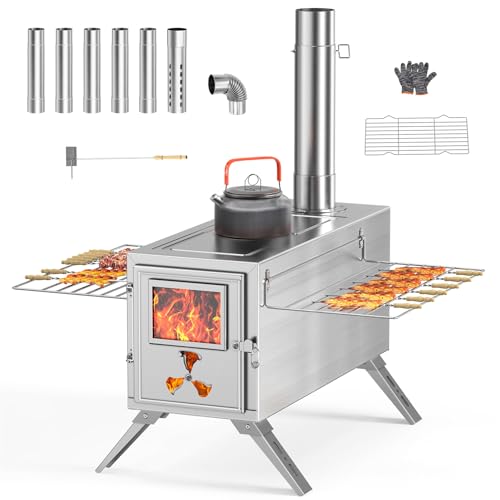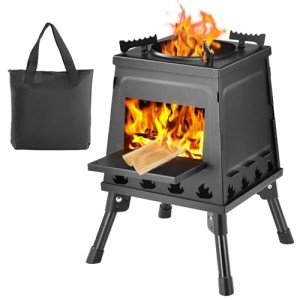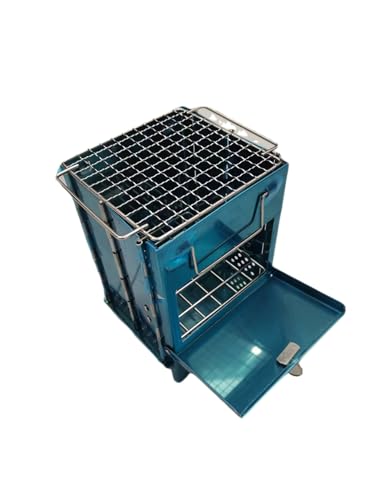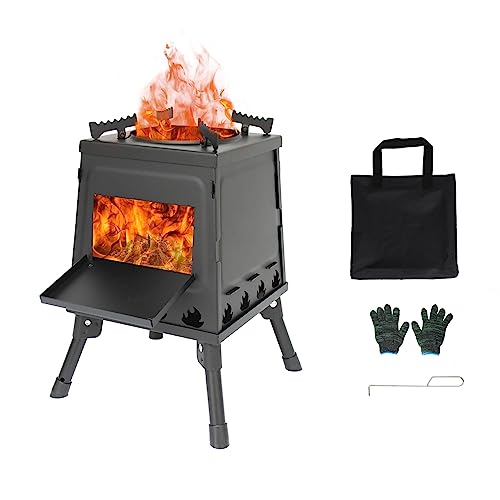Camping in the great outdoors offers a unique opportunity to connect with nature, escape the routine of daily life, and enjoy the peace and tranquility that only nature can provide. However, the experience can be greatly enhanced by the ability to prepare your own meals in a hassle-free manner. Enter the portable wood burning stove—an increasingly popular option for camping enthusiasts who wish to combine cooking and the outdoor experience without relying on fossil fuels or heavy equipment. In this guide, we will explore the benefits and features of portable wood burning stoves, how to choose the right one, and tips for getting the most out of your stove while camping.
Understanding Portable Wood Burning Stoves
Portable wood burning stoves are compact, lightweight cooking appliances designed to burn wood as their primary source of fuel. Unlike traditional stoves that may require propane or other gas sources, these stoves use twigs, branches, and other small pieces of wood to generate heat. This makes them an eco-friendly choice for campers who want to reduce their carbon footprint, while also taking advantage of the natural resources found in the environment.
Key Benefits of Portable Wood Burning Stoves
- Eco-Friendly Fuel Source: Wood is a renewable resource, and using it as fuel reduces dependence on non-renewable fossil fuels.
- Cost-Efficient: Once you have the stove, the cost of fuel is minimal. Campers can often find suitable wood nearby, eliminating the need to purchase fuel.
- Versatility: Wood burning stoves can be used for various cooking methods, including boiling, frying, and grilling.
- Compact Design: Many models fold or break down easily, making them easy to transport and carry.
- Durability: Made from resilient materials like stainless steel, these stoves are designed to withstand outdoor conditions.
Choosing the Right Portable Wood Burning Stove
Selecting the right stove for your camping needs requires careful consideration of several factors. Here are some key points to keep in mind:
1. Size and Weight
- Backpacking vs. Car Camping: For backpackers, lightweight models that pack down small are essential. In contrast, car campers may prioritize a larger cooking surface.
- Capacity: Consider how many meals you plan to cook and for how many people.
2. Design and Construction
- Materials: Look for models made from stainless steel or titanium, as these are both durable and heat-efficient.
- Airflow Mechanism: Stoves with adjustable airflow can help regulate flame intensity.
3. Ease of Use and Setup
- Assembly: Some stoves require more time to set up than others. Choose one that fits your level of expertise.
- Cleaning: Look for models that are easy to clean after use.
4. Cooking Capabilities
- Cooking Surface: Assess the size of the cooking surface and whether it can accommodate the type of cookware you plan to use.
- Multi-functionality: Some stoves offer options for both cooking and heating.
5. Cost
- Budget: Determine your budget in advance. While high-end models may offer more features, there are plenty of affordable options.
Using Your Portable Wood Burning Stove
Once you’ve chosen the right stove, it’s essential to use it effectively. Here are some tips for optimal performance:
Before You Start Cooking:
- Gather Fuel: Collect dry twigs, branches, or small logs.
- Prepare a Fire Pit: Clear an area of debris and use rocks or a fire ring to create a safe cooking environment.
Setting Up Your Stove:
- Assemble the Stove: Follow the manufacturer’s instructions for easy setup.
- Add Fuel: Place small pieces of wood in the stove, with larger pieces for later once the kindling catches fire.
Cooking Tips:
- Start with Kindling: Use small twigs or dry leaves to get the fire going.
- Maintain the Flame: Add larger pieces of wood as the fire grows, ensuring enough airflow.
- Monitor Cooking Times: Cooking over wood can differ from other fuels, so adjusting cooking time might be necessary.
Safety Precautions:
- Observe Campfire Regulations: Always check local fire regulations before starting a fire.
- Extinguish Properly: Ensure the fire is fully extinguished upon leaving your campsite.
FAQs
What types of wood are best for burning?
Hardwoods like oak, hickory, and maple burn longer and hotter than softwoods like pine or spruce. However, softwoods ignite quickly and are useful for kindling.
Can I use my wood burning stove in national parks?
Many national parks have restrictions on campfires and wood burning stoves. Be sure to check the specific regulations for the park you are visiting.
How do I clean my portable wood burning stove?
Let the stove cool completely, then use a brush to remove ash and debris. Regular maintenance will enhance the stove’s lifespan.
Can I use my stove for heating?
Many portable wood burning stoves can provide warmth, but they must be used cautiously in enclosed spaces to ensure proper ventilation.
Is it difficult to find firewood when camping?
Typically, you can find suitable firewood near most camping sites. However, it is important not to collect wood from protected areas or bring wood from home to prevent the spread of invasive species.
A portable wood burning stove can be a valuable addition to any camping adventure, providing an eco-friendly and versatile means of preparing meals while enjoying the great outdoors. By considering the features that best suit your needs and practicing safety and maintenance, campers can enjoy a warm meal under the stars, enriching their outdoor experience. With a little bit of planning and an understanding of how to use the stove effectively, anyone can quickly become adept at cooking with wood. So pack your bags, gather your friends or family, and prepare to make delicious meals no matter where your adventures take you.






